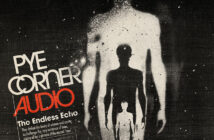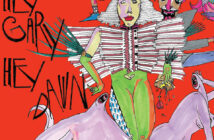
Floods is the second full length album from London based producer James Murray and the first for his own, recently established, Slowcraft Label. The CD is a concept album based loosely around entangled notions of water and memory. Murray spent his childhood on a Welsh floodplain and throughout Floods he presents the many states of water, from initial rainfall through to the inevitable flood, awash with nostalgic sepia.
The musical evocation of water is hardly an original idea but Murray approaches his tone painting with subtlety and restraint. Mostly, Murray avoids mimicking the sounds of water and instead suggests water through the movement of the music. Digital rivers ebb and flow into one another then seep away into nothingness.
On his previous album, 2008′ Where Edges Meet, Murray often distilled his rich, rolling synths with lo-fi dance beats, bringing an urban, built up feel to the music. On Floods however, organicism is clearly far more of a concern. The beats are stripped away completely, leaving sprawling, pastoral soundscapes teeming with digital nuance.
Formally, the music is very patient to develop. Additive structures are an important technique here, gradually building up the texture by steadily overlaying musical motives. Where the album is at its most beautiful, however, it is still. The broad, veiled textures are mixed with incredible stereophonic depth creating the kind of vast musical landscapes that Fennesz made famous on Black Sea. This is music for the listener to inhabit rather than observe.
At the heart of the album is the interplay between the naively acoustic and the consciously digital. Interestingly, it is the digital elements that are the more effective evocation of nature. There is crackling, static rain on Hold Your Breath, swirling, synthetic undercurrents on A Place to Stand and a glacial keyboard melody on Greenlands Lament. In fact, it is the inclusion of actual field recordings of rain on Greenlands that provides the albums weakest point, an unnecessary intrusion of the literal into the symbolic.
It is this symbolic plane on which the album most effectively operates. Everyone has memories of water, it is both component and representative of the collective unconscious. Murray’ depictions of water are filtered through his memory, and then again through the memories of his listeners. It is a simple technique to use sound to suggest image and movement but the approach that Murray takes and the results it yields are surprisingly complex.
Henry Andersen



